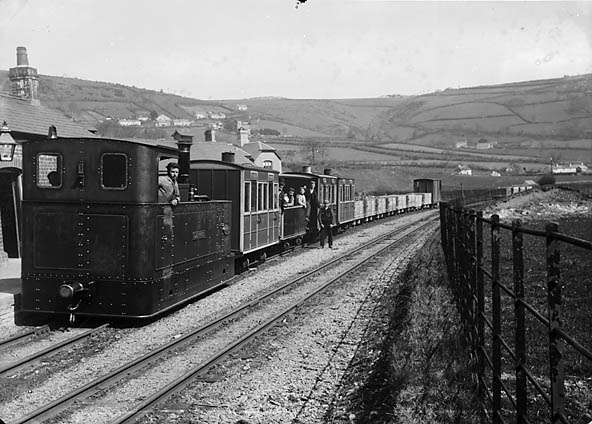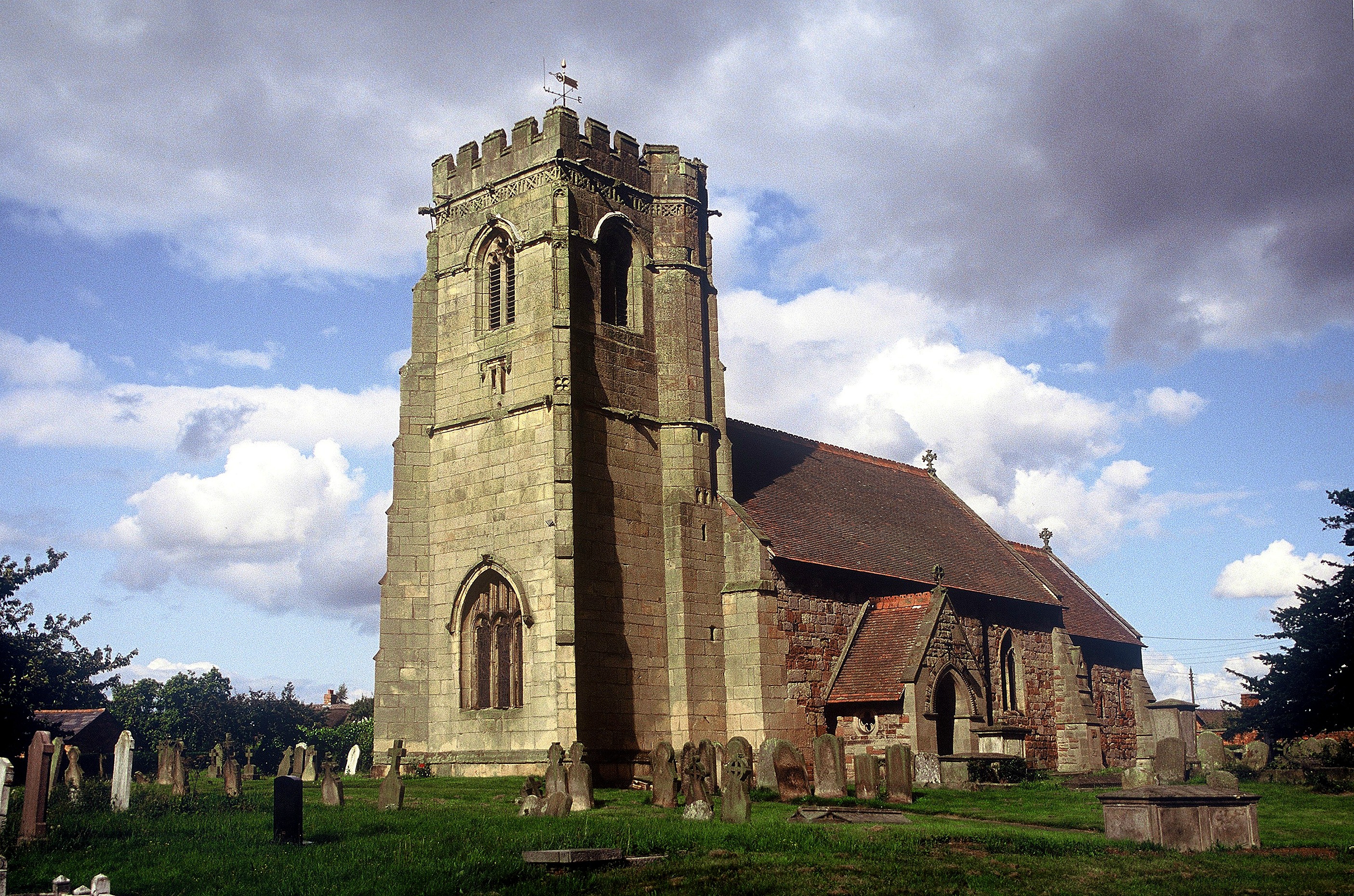|
Henry Maybury
Sir Henry Percy Maybury (17 November 1864 – 7 January 1943) was a British civil engineer. He began his career as a railway engineer, working on many railways in England and Wales before becoming the county surveyor for Kent. At the start of the First World War he was appointed to supervise roads used by the Allies in France, holding the British Army rank of Brigadier-General. In recognition of his services in this theatre he was appointed a Companion of the Order of the Bath and a Knight Commander of the Order of St Michael and St George by the British government and an officer of the Legion of Honour by the French. After the war he held various civil service positions, mainly within the Ministry of Transport, and was elected president of the Institution of Civil Engineers in 1933. Early life Maybury was born in Uffington in Shropshire, fourth son of Charles Maybury, a farmer, and his wife Jane (''nee'' Matthews), and was educated at nearby Upton Magna. Upon finishi ... [...More Info...] [...Related Items...] OR: [Wikipedia] [Google] [Baidu] |
Brigadier-General (United Kingdom)
Brigadier (Brig) is a senior rank in the British Army and the Royal Marines. Brigadier is the superior rank to colonel, and subordinate to major-general. It corresponds to the rank of brigadier general in many other nations. The rank has a NATO rank code of OF-6, placing it equivalent to the Royal Navy commodore and the Royal Air Force air commodore ranks and the brigadier general (1-star general) rank of the United States military and numerous other NATO nations. Insignia The rank insignia for a brigadier is a St Edward's Crown over three "pips" ( "Bath" stars). The rank insignia for a brigadier-general was crossed sword and baton. Usage Brigadier was originally an appointment conferred on colonels (as commodore was an appointment conferred on naval captains) rather than a substantive rank. However, from 1 November 1947 it became a substantive rank in the British Army. The Royal Marines, however, retained it as an acting rank until 1997, when both commodore and brigadier ... [...More Info...] [...Related Items...] OR: [Wikipedia] [Google] [Baidu] |
Civil Service
The civil service is a collective term for a sector of government composed mainly of career civil service personnel hired rather than elected, whose institutional tenure typically survives transitions of political leadership. A civil service official, also known as a public servant or public employee, is a person employed in the public sector by a government department or agency for public sector undertakings. Civil servants work for central and local governments, and answer to the government, not a political party. The extent of civil servants of a state as part of the "civil service" varies from country to country. In the United Kingdom (UK), for instance, only The Crown, Crown (national government) employees are referred to as "civil servants" whereas employees of local authorities (counties, cities and similar administrations) are generally referred to as "local government officers", who are considered public servants but not civil servants. Thus, in the UK, a civil servant is ... [...More Info...] [...Related Items...] OR: [Wikipedia] [Google] [Baidu] |
Sidcup
Sidcup is an area of south-east London, England, primarily in the London Borough of Bexley. It is south-east of Charing Cross, bordering the London Boroughs of London Borough of Bromley, Bromley and Royal Borough of Greenwich, Greenwich. It was part of Kent prior to the creation of Greater London in 1965. The name is thought to be derived from meaning "seat-shaped or flat-topped hill"; it had its earliest recorded use in 1254. According to the Office for National Statistics, ONS, as of 2021, the population of Sidcup is 15,400 (rounded to the nearest 100). History Origins Sidcup originated as a tiny hamlet on the road from Maidstone to London. According to Edward Hasted, "Thomas de Sedcopp was owner of this estate in the 35th year of king Henry VI of England, Henry VI. [i.e. in the 1450s] as appears by his deed." Hasted described Sidcup in the latter part of the 18th century as "a small street of houses, among which is an inn of much resort", referring to the former Bl ... [...More Info...] [...Related Items...] OR: [Wikipedia] [Google] [Baidu] |
Motor Car Act 1903
The Motor Car Act 1903 ( 3 Edw. 7. c. 36) was an Act of the United Kingdom Parliament that received royal assent on 14 August 1903, which introduced motor vehicle registration, driver licensing and increased the speed limit. Context The act followed the Locomotives on Highways Act 1896 ( 59 & 60 Vict. c. 36) which had increased the speed limit for motorcars to 14 mph from the previous 4 mph in rural area and 2 mph in towns. There were some who wished to see the speed limit removed altogether. The influential Automobile Club (soon to become the Royal Automobile Club or RAC) was split on the subject; the chair of the working group on the bill was John Douglas-Scott-Montagu MP who took a moderate line supporting speed limits, but was opposed on this by the chairman of the organisation Roger Wallace who were 'strongly against any speed limit' and described Montagu as a 'traitor'. The secretary of the club publicly proposed a 'compromise' of 25 mph without au ... [...More Info...] [...Related Items...] OR: [Wikipedia] [Google] [Baidu] |
Glyn Valley Tramway
The Glyn Valley Tramway was a narrow-gauge railway that ran through the Ceiriog Valley in north-east Wales, connecting Chirk with Glyn Ceiriog in Denbighshire (now Wrexham County Borough). The gauge of the line was while it was horse-drawn, which was unofficially increased to when steam locomotives were introduced. The total length of the line was , of which were worked by passenger trains, the remainder serving a large granite quarry and several minor slate quarries. History Construction The railway was built to connect the quarries at Glyn Ceriog with the Shropshire Union Canal at Chirk. A standard gauge "Ellesmere & Glyn Valley Railway" was authorised by the ( 29 & 30 Vict. c. cccxxxv) of 6 August to run from the Cambrian Railway at Ellesmere to the GWR at Chirk and thence to follow the Glyn Ceiriog road to the quarries. No construction took place and by the ( 32 & 33 Vict. c. cli), the Ellesmere to Chirk portion was abandoned. A further act of Parliament, the ... [...More Info...] [...Related Items...] OR: [Wikipedia] [Google] [Baidu] |
Wrexham
Wrexham ( ; ) is a city status in the United Kingdom, city in the North East Wales, north-east of Wales. It lies between the Cambrian Mountains, Welsh mountains and the lower River Dee, Wales, Dee Valley, near the England–Wales border, border with Cheshire in England. Historically in the county of Denbighshire (historic), Denbighshire, it became part of the new county of Clwyd in 1974. It has been the principal settlement and administrative centre of Wrexham County Borough since 1996. At the 2021 United Kingdom census, 2021 census, the built up area had a population of 44,785, and the wider county borough, which also includes surrounding villages and rural areas, had a population of 135,117. Wrexham was awarded city status in 2022. Wrexham was likely founded before the 11th century and developed in the Middle Ages as a regional centre for trade and administration. Wrexham has historically been one of the primary settlements of Wales, and was the largest settlement in Wales fo ... [...More Info...] [...Related Items...] OR: [Wikipedia] [Google] [Baidu] |
London And North Western Railway
The London and North Western Railway (LNWR, L&NWR) was a British railway company between 1846 and 1922. In the late 19th century, the LNWR was the largest joint stock company in the world. Dubbed the "Premier Line", the LNWR's main line connected four of the largest cities in England; London, Birmingham, Manchester and Liverpool, and, through cooperation with their Scottish partners, the Caledonian Railway also connected Scotland's largest cities of Glasgow and Edinburgh. Today this route is known as the West Coast Main Line. The LNWR's network also extended into Wales and Yorkshire. In 1923, it became a constituent of the London, Midland and Scottish (LMS) railway, and, in 1948, the London Midland Region of British Railways. History The company was formed on 16 July 1846 by the ( 9 & 10 Vict. c. cciv), which authorised the amalgamation of the Grand Junction Railway, London and Birmingham Railway and the Manchester and Birmingham Railway. This move was prompted, in ... [...More Info...] [...Related Items...] OR: [Wikipedia] [Google] [Baidu] |
Great Western Railway
The Great Western Railway (GWR) was a History of rail transport in Great Britain, British railway company that linked London with the southwest, west and West Midlands (region), West Midlands of England and most of Wales. It was founded in 1833, received its enabling act of Parliament on 31 August 1835 and ran its first trains in 1838 with the initial route completed between London and Bristol in 1841. It was engineered by Isambard Kingdom Brunel, who chose a broad gauge of —later slightly widened to —but, from 1854, a series of Consolidation (business), amalgamations saw it also operate Standard gauge, standard-gauge trains; the last broad-gauge services were operated in 1892. The GWR was the only company to keep its identity through the Railways Act 1921, which amalgamated it with the remaining independent railways within its territory, and it was finally merged at the end of 1947 when it was Nationalization, nationalised and became the Western Region of British Railways. ... [...More Info...] [...Related Items...] OR: [Wikipedia] [Google] [Baidu] |
Shrewsbury And Hereford Railway
The Shrewsbury and Hereford Railway was an English railway company that built a standard gauge line between those places. It opened its main line in . Its natural ally seemed to be the Great Western Railway. With other lines it formed a route between the mineral resources of South Wales and the industries of the north-west of England, and this attracted the interest of the London and North Western Railway, which sought access to South Wales. The GWR and the LNWR jointly leased the S&HR line in 1862, later jointly acquiring ownership of it, in 1871. LNWR mineral traffic developed, and after the opening of the Severn Tunnel in 1886, the line became an important main line for traffic from the south-west of England to the north-west. With the decline in local passenger and goods traffic in the 1950s many intermediate stations closed, but the main line continues in important use at the present day. Origins On 3 August 1846, 16 railway bills were passed in Parliament; one of these wa ... [...More Info...] [...Related Items...] OR: [Wikipedia] [Google] [Baidu] |
Shrewsbury Railway Station
Shrewsbury railway station serves the town of Shrewsbury, in Shropshire, England. Built in 1848, it was designated a grade II listed building in 1969. Many services starting at or passing through the station are bound for Wales, and it is a key hub for its operator, Transport for Wales; services are also provided by West Midlands Railway. History The station was formerly known as Shrewsbury General and is the only remaining railway station in the town; others, including Shrewsbury Abbey, have long since closed. Shrewsbury railway station was originally built in October 1848 for the county's first railway, the Shrewsbury to Chester Line. The architect was Thomas Mainwaring Penson of Oswestry and the contractor was Thomas Brassey. The building is unusual, in that the station was extended between 1899 and 1903 by the construction of a new floor underneath the original station building. The building style was imitation Tudor, complete with carvings of Tudor style heads ar ... [...More Info...] [...Related Items...] OR: [Wikipedia] [Google] [Baidu] |
Upton Magna
Upton Magna is a village and civil parish in Shropshire, England. (''Magna'' is Latin, meaning "great". Therefore, the translation of Upton Magna is "Great Upton".) Nearby are the villages of Uffington, Rodington and Withington, as well as the wooded Haughmond Hill. The nearest town to Upton Magna is Shrewsbury, just to the west. Upton Magna is situated on the National Cycle Route 81 between Wellington and Shrewsbury. Buildings Upton Magna is notable for containing the oldest still-standing cottage in Europe – Cruck Cottage, a thatch-roofed, timber-framed cottage located near the church. The entry for this Grade II listed building on the Historic England website suggests that it dates from the 15th or 16th century. However, although the building appears to have been remodelled in the 15th century, dendrochronological tests on the crucks in the cottage have dated the timber to 1269. Key features of the village include a primary school, a Church of England parish ch ... [...More Info...] [...Related Items...] OR: [Wikipedia] [Google] [Baidu] |
Shropshire
Shropshire (; abbreviated SalopAlso used officially as the name of the county from 1974–1980. The demonym for inhabitants of the county "Salopian" derives from this name.) is a Ceremonial counties of England, ceremonial county in the West Midlands (region), West Midlands of England, on the England–Wales border, border with Wales. It is bordered by Cheshire to the north-east, Staffordshire to the east, Worcestershire to the south-east, Herefordshire to the south, and the Welsh principal areas of Powys and Wrexham County Borough, Wrexham to the west and north-west respectively. The largest settlement is Telford, while Shrewsbury is the county town. The county has an area of and a population of 498,073. Telford in the east and Shrewsbury in the centre are the largest towns. Shropshire is otherwise rural, and contains market towns such as Oswestry in the north-west, Market Drayton in the north-east, Bridgnorth in the south-east, and Ludlow in the south. For Local government i ... [...More Info...] [...Related Items...] OR: [Wikipedia] [Google] [Baidu] |





